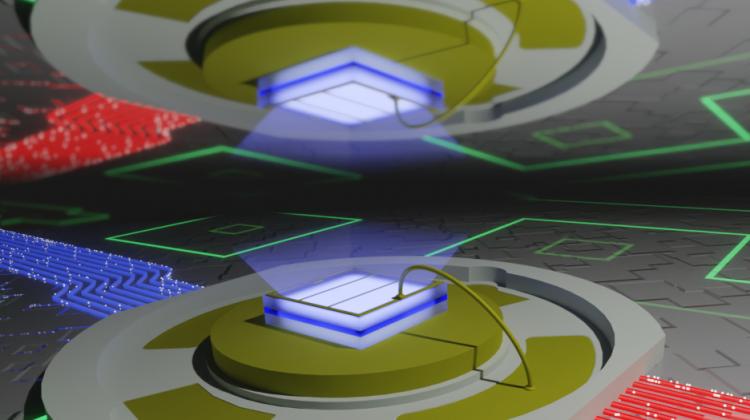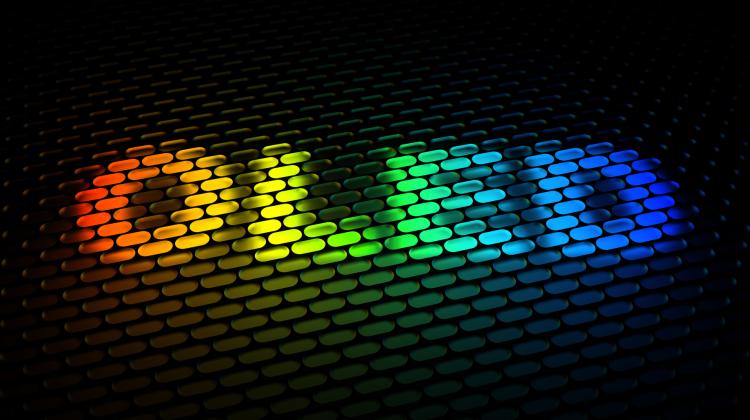Polish idea for bidirectional LEDs - without AC/DC power supply
 Fig. Bidirectional diode - a completely new Polish idea for the operation of a diode. Credit: Mateusz Hajdel (Institute of High Pressure Physics PAS), co-author of the paper on bidirectional LEDs.
Fig. Bidirectional diode - a completely new Polish idea for the operation of a diode. Credit: Mateusz Hajdel (Institute of High Pressure Physics PAS), co-author of the paper on bidirectional LEDs.
Diodes that emit light regardless of the direction of current flow through the device - directly from alternating current (AC), and not only from direct current (DC) - have been developed by researchers from the Institute of High Pressure Physics of the Polish Academy of Sciences.
This is a non-standard solution in optoelectronic structures that opens the way to more energy-saving light emitters and can also serve as a research tool to better understand the physics of device operation.
Standard light emitting diodes (LEDs) - used, for example, in home lighting - require direct current (DC) in a specific direction to work. If we want to power them from an AC socket, we need an AC/DC converter (rectifier or converter, commonly called a power supply). In an interview with PAP - Science in Poland, the first author of the solution, Mikołaj Żak, adds that AC/DC converters are not a perfect solution. 'They usually involve 10-20 percent energy losses,’ he says. Moreover, such a converter takes up quite a lot of space.
Additionally, if there is no converter, half of the electricity is wasted. This is due to the fact that the socket has an alternating current, i.e. one that cyclically changes its flow direction. The frequency of the current in the network is 50 Hz, which means that a single LED turns on and off 50 times in one second, i.e. it does not light up half of the time. Hence the idea to create a diode that will be adapted to working conditions with alternating current, and will glow regardless of the direction the current flows through it from, i.e. whether the voltage in the network is negative or positive.
LED ASYMMETRY
The problem lies in the construction of a standard LED, which consists of an n-type doped semiconductor (negative), an active region and a p-type doped semiconductor (positive). When the diode is forward-biased, electrons from the conduction band accumulated in the n-type semiconductor are supplied to the active region. On the other hand, holes are supplied from the valence band in the p-type semiconductor. Both types of carriers are necessary for light generation and undergo recombination processes in the active area. Since hole transport can be seen as electron transport only in the opposite direction, an asymmetry in the LED structure is visible. The diode lights up only when electrons flow through the device from the n-type region through the active region to the p-type region. In turn, when the voltage is applied in the opposite direction in the so-called reverse direction - the diode cannot generate light.
A Polish team of scientists from the Institute of High Pressure Physics of the Polish Academy of Sciences in Warsaw has just presented proof that it is possible to develop a gallium nitride diode with a symmetrical structure. In their solution, the active area is surrounded by layers that can supply both electrons and holes from both sides. These are tunnel joints in which, thanks to the so-called tunnelling effect, electrons can be transported from the valence band of a p-type semiconductor through a narrow electric potential barrier to the conduction band of an n-type semiconductor. Researchers used molecular beam epitaxy to demonstrate the semiconductor structures of bidirectional LEDs.
They published their research in the prestigious journal Nature Communications, and their paper was additionally highlighted by the journal's editorial team.
Bidirectional gallium nitride diodes, which the Polish researchers are working on, are able to emit light from violet to green. 'Such diodes will be able to emit white light, needed in lighting,’ says Żak. The idea still needs to be refined before it can be marketed. Doctoral candidate Żak has just received a grant from the Polish National Science Centre (NCN) for this research. For now, the prototype of the device shines brighter when the current flows in one direction and less brightly when it flows in the other direction. The Polish team already has an idea for eliminating this difference. The researchers will also work on ensuring that the diodes are able to operate at high voltages to get closer to the mains voltage.
Scientists from the Institute of High Pressure Physics of the Polish Academy of Sciences hope that thanks to their work it will be possible to construct more energy-efficient diodes, but an equally important aspect is that this invention will allow them to better understand the operation of standard LED diodes.
Mikołaj Żak emphasises that the solution the researchers have developed will be a kind of research platform that will help better understand the mechanisms of transport and recombination of electrons and holes in order to increase the efficiency of semiconductor light emitters of various designs.
'We have put together previously known bricks in a completely new way. We show that an LED can be constructed differently than before, differently than what is taught in textbooks. In our project, we used tunnel connectors in an unconventional way. And this opens the way to constructing new devices powered regardless of the direction of current flow,’ says Żak.
PAP - Science in Poland, Ludwika Tomala
lt/ agt/ kap/
tr. RL
Przed dodaniem komentarza prosimy o zapoznanie z Regulaminem forum serwisu Nauka w Polsce.

















